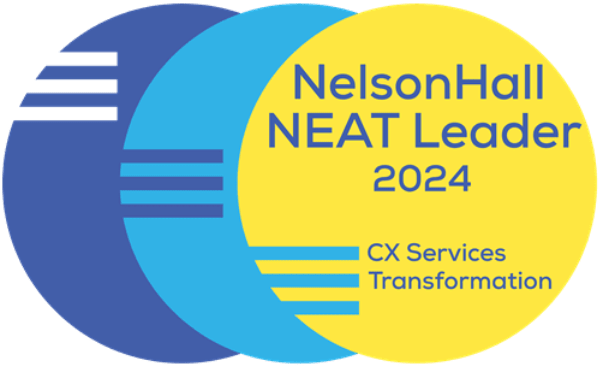What is Customer Experience (CX) Transformation?
No matter the industry, from banking to travel and hospitality, healthcare to government, organizations must adapt to the ever-evolving expectations of their clients, customers, members and citizens to succeed. These audiences are the lifeblood of any organization and its reason for being. As such, their satisfaction results in a greater likelihood to recommend an organization or brand to others, generating positive word-of-mouth.
Enter Customer Experience (CX) Transformation — a comprehensive approach that reshapes how organizations interact with their clients. This transformation involves refining customer interaction processes, leveraging advanced technologies and implementing strategies designed to deliver superior and consistent experiences across all touchpoints. As companies strive to stand out, embracing CX Transformation is essential for meeting modern customer demands and securing a competitive edge.
How can you improve your customer experience strategy with CX Transformation?
CX Transformation is the systematic process of evaluating and elevating the ways an organization engages with its customers. This means enhancing engagement methods, integrating new or optimizing existing technologies and ensuring consistency across every channel. Essentially, it’s about more than just improving interactions; it’s about reimagining the entire customer journey.
In the context of CX Transformation, organizations must focus on CX modernization, i.e., adapting to technological advancements, shifting customer expectations, developing processes that support automated workflows and both customer and employee experiences. By prioritizing CX Transformation, organizations can build deeper connections with their audiences, paving the way for loyalty and growth.
Key elements of a CX Transformation strategy
To effectively execute a successful CX transformation strategy, organizations should focus on several core components:
- Data-driven insights: Utilizing analytics to understand customer behavior and preferences, enabling tailored experiences.
- Personalized customer interactions: Crafting unique experiences for each customer, making them feel valued and understood.
- Employee training and engagement: Equipping staff with the necessary skills and knowledge to deliver exceptional service.
- Digital tools and technologies: Implementing cutting-edge technologies that streamline customer interactions and enhance service delivery.
- Continuous improvement processes: Establishing a culture of feedback and adaptation to consistently refine the customer experience.
These elements together form a robust customer experience strategy that not only meets but anticipates customer needs for better, more efficient outcomes.
The benefits of CX Transformation
Investing in CX Transformation yields numerous benefits including: -
- Boosting customer satisfaction and loyalty: A focus on improved interactions leads to happier customers who are more likely to remain loyal and spread positive word of mouth to others, which drives growth.
- Increasing operational efficiency: Streamlined processes and enhanced technologies reduce friction, leading to better resource allocation and lower costs.
- Enabling proactive customer service: Data insights allow organizations to anticipate issues and address them before they escalate, improving customer perceptions.
The benefits of CX Transformation are clear: it’s an investment in the future of your organization.
Implementing CX transformation with Conduent
When it comes to executing successful CX Transformation, partnering with the right solutions provider is key. Conduent offers innovative CX solutions designed to facilitate transformation backed with our unique breadth of CXM expertise. From tailored solutions to ongoing support, Conduent provides organizations with the resources they need to succeed in their CX transformation journey and scale with customer demand. We do this by combining people, process and technology to optimize customer interactions and improve service delivery, resulting in sustained growth. It’s one of the reasons we were named a 2024 Leader in CX Services Transformation by NelsonHall.

With this unique approach, we’re able to: Enable hybrid customer care to drive personalized interactions in as few as 12 weeks.
It’s a simple fact: User expectations are constantly evolving. CX Transformation is no longer optional; it’s a necessity. By embracing CX Transformation, organizations can enhance their strategies, build stronger customer relationships, and drive meaningful growth. With Conduent as a partner, organizations can navigate this transformative journey with confidence, ensuring they remain competitive and people-centric for better outcomes. For more information on enhancing CXM for your organizations, visit our- Customer Experience Management-page.
Commonly asked CX Transformation questions
What is a CX process?
A CX process at Conduent refers to the series of steps and practices implemented to manage and enhance customer interactions across various touchpoints, ensuring consistent and positive customer experiences.
What does CX strategy stand for?
CX strategy stands for Customer Experience strategy. At Conduent, it encompasses the plans and actions designed to create and deliver superior customer experiences that align with organizational goals and drive customer loyalty.
What is CX change?
CX change at Conduent refers to the modifications and improvements made to customer experience practices and systems to adapt to evolving customer needs and expectations, leveraging data-driven insights and innovative solutions.